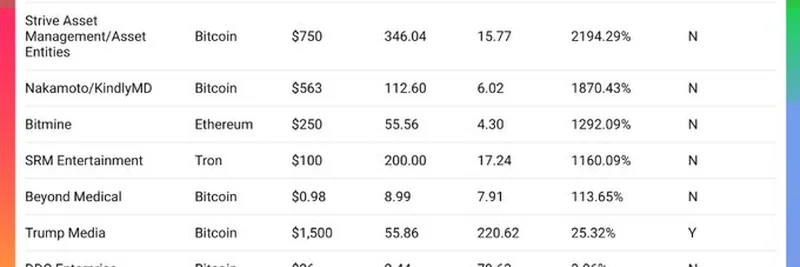Hey there, crypto enthusiasts! If you’ve been keeping an eye on the latest trends in the blockchain world, you’ve probably heard about something called PIPE funding. Recently, journalist Laura Shin dropped a bombshell on X, highlighting how this financial mechanism is shaking up crypto treasury companies. Let’s break it down in a way that’s easy to digest, especially if you’re into meme tokens or just curious about the crypto space.
What’s PIPE Funding All About?
PIPE stands for "Private Investment in Public Equity." It’s a way for public companies—especially those holding crypto treasuries—to raise cash by selling shares to private investors at a discount. Sounds like a win-win, right? Well, not so fast. The catch is that these shares often start as unregistered, meaning they can’t be traded right away. Once registered with the SEC, though, they hit the market—and that’s where things can get messy.
The Share Inflation Problem
According to Laura’s post, some crypto treasury companies are seeing their share supply skyrocket thanks to PIPE deals. Take Sharplink, for example. Their share supply was inflated by a jaw-dropping 8,893%! That’s not a typo. Other companies like Upexi (2,684.33%) and Strive Asset Management (2,194.29%) also saw huge jumps. This chart, credited to Bits + BiPs (@BITSANDBiPS), lays it all out:
- Sharplink: Ethereum, $425M PIPE, 58.70M shares, 0.66M supply before offering, 8,893.94% ratio.
- Upexi: Solana, $100M PIPE, 35.97M shares, 1.34M supply, 2,684.33% ratio.
- Trump Media: Bitcoin, $1,500M PIPE, 55.86M shares, 220.62M supply, 25.32% ratio.
The higher the ratio, the more diluted the original shareholders become. When those new shares flood the market, prices can crash—sometimes by as much as 70%, as seen with Sharplink and Upexi after registration.
Why Should You Care?
If you’re investing in or trading meme tokens or other crypto-related stocks, this could hit your wallet hard. The sudden dump of shares can trigger a price drop, leaving early investors scrambling. Laura points out that this info was dug up from SEC filings and other documents by Steven Ehrlich, showing how hidden these risks can be unless you know where to look.
The Bigger Picture
This isn’t just about a few companies. The trend spans across tokens like Bitcoin, Ethereum, Solana, and Tron, with firms like Bitmine, SRM Entertainment, and even Trump Media in the mix. Some, like ProCap/Columbus Circle, still have “TBD” (to be determined) statuses, hinting that more revelations might be on the way.
What Can You Do?
- Stay Informed: Keep an eye on SEC filings and updates from trusted sources like Laura Shin or meme-focused platforms like meme-insider.com.
- Diversify: Don’t put all your eggs in one basket—spread your investments to cushion against sudden dumps.
- Watch Registration Dates: When a company’s shares get registered, be ready for potential volatility.
This PIPE phenomenon is a reminder that the crypto world is full of twists and turns. Whether you’re a blockchain practitioner or a casual investor, understanding these mechanisms can help you navigate the market smarter. Got questions or want to dive deeper? Drop a comment below or check out our knowledge base for more crypto insights!



